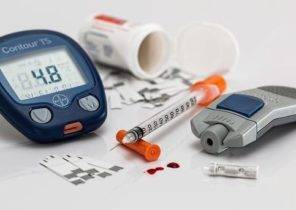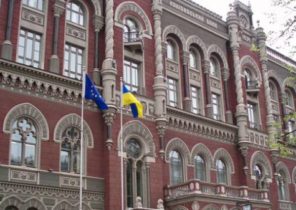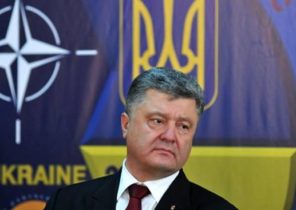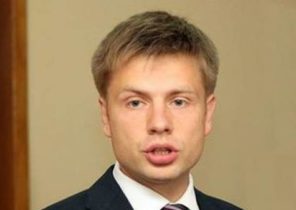
Since the beginning of this year opened access to several millions of secret documents of the Central intelligence Agency (CIA) relating to the events of the cold war.
Most of the declassified documents were available before, but to see them only in four places, which created some difficulties.
The CIA reports about Latvia affect a wide range of topics: the extent and characteristics of armed resistance, moral resistance and the level of nationalism. Declassified reports of American spies on the higher education system in Latvia. Judging by the content of the reports, of particular interest, the CIA showed to the teachers in the field of medicine, pharmacology, Microbiology.
About the level of espionage may indicate at least such an example. 23 Nov 1951 from Rostock to Ventspils was sent to a cargo ship Vorwarts, and intelligence the US got photos of all invoices for the goods.
It is possible to Express admiration for the work of the CIA. Reports one agent was verified and duplicated reports of other agents, diplomats, “tourists” etc. Local American spies checked photos from space satellites, unscrambled military and industrial targets. Materials the CIA also reveal that worked as intelligence analysts. The number of inhabitants of Latvia to the census of 1959 was not reported, but based on the published in 1950 the results of the election (they stated the number of eligible voters) CIA analysts gave a reasonably accurate estimate of the population of the Republic. Similarly, CIA analysts determined the religious composition of the inhabitants of Latvia. According to their calculations, in 1950, 47% of Latvians were Lutherans, 42% of Catholics and 8% Orthodox.
The extent to which the published CIA documents which may help to understand economic processes in post-war Latvia? Consider one example — the industrial growth in Latvia after the Second world war.
The origin of plant equipment
In thinking about the processes in the economy of Latvia after the Second world war is dominated by two mutually exclusive approaches. In Latvia on the basis of the decision of the Seimas established a Commission for the counting damage from occupation. This Commission counts the billions of dollars in economic damage caused to Latvia by the Soviet dictatorship with the idea sometime in the future try to recover it with Russia.
The second approach is the following settings of the propaganda of Soviet times about the huge contribution of the Soviet Union in the development of industry and transport system of Latvia. Soviet propaganda tirelessly repeated that the Soviet Union made Latvia more than its economy could produce on their own, which was built after the war in the territory of Latvia plants this generous gift of the Russian people of Latvian people, for what Latvia should be forever in debt to the USSR.
In 1945-1950 destroyed during the war, the factories of Latvia was indeed restored and built new. Old and new enterprises were equipped with machines, equipment etc cannot be denied. Counter that in the public space of Latvia was expressed in response to Soviet propaganda the following: the real purpose of industrialization of Latvia was colonized and being independent, Latvia would have developed much faster than in the USSR, so it is necessary to calculate the damage from the Soviet occupation.
Everyone who has worked with statistics of times of the USSR, realizes that she’s been published in strict compliance with the restrictions of censorship. Published in collections of statistical data and the information in the press only partially disclose the processes in the economy. On the basis of published in the Soviet times, there emerges a very idyllic picture. After the war there is a rapid industrial growth. Latvia for ten years becoming the leader in the radio industry, manufacturing, communications and other spheres not only in the USSR but also on a global scale. But the statistics and thousands of publications of the Soviet period did not give a direct answer to a simple question: where did the industrial equipment, which in 1945-1950 was established on the plants of Latvia? In the framework of Soviet propaganda, the answer was clear — in Latvia were established produced in other Soviet factories machines and equipment that were donated in the name of fraternal friendship.
German reparations
After the collapse of the USSR has not disappeared, that immediately after the Second world war, an important source of supply of machinery and equipment for the entire USSR (and also Poland and Yugoslavia) began payment of Germany for damage caused in the occupied territories. At the end of world war II the victorious (Britain, USA and USSR) agreed that Germany should compensate for the damage caused in the form of reparations. Before the war, the USSR lagged significantly behind European countries and the United States in such industries as electro-mechanics, optics, precise mechanics, so the proposal of the leadership of the Soviet Union in reparations was included for the industrial sector, which at that time Germany was considered a world leader, and shipbuilding, aircraft and chemical industry. In 1945 the USSR was in Germany 400 thousand freight cars with equipment and machines. Before August 1, 1946 in Germany to transport in the USSR was dismantled 4 thousand 166 plants worth $ 1.9 billion.
Reparations from East Germany were delivered to the USSR until 1954. In 1949 74,2% (billion DM) reparations from East Germany were industrial machinery, vehicles and parts. In 1950, the amount of reparations from the GDR amounted to 48 million marks, of this amount, 30 million were delivered to industrial machinery and parts.
The restrictions of Soviet censorship
In Soviet times, the publication of any information about the movement of German factories in the USSR was prohibited. Institutions, censorship was entrusted to make sure that no information is published on the carriage of the German factories and on the use of German technical documents in the design Bureau of the USSR.
The Central government in the modern Russia is reluctant to widely published data about the value and impact of German reparations on the economy of the USSR. Russian translation of the book Boldyrev “Soviet occupation policy in Germany, 1945-1949: the economic aspect” (Saarbrucken, LAP Lambert Academic Publishing, 2011) published in Germany and not in Russia. In turn, the book Simon’s “military-industrial complex of the USSR: economic growth, structure, organization of production, management”. (M: Russian Fund of assistance to education and science, 2015), which is widely regarded the transfer of German technology in the Soviet Union, Russia has issued a minor release.
Still didn’t have the exact answer to the question about the value of German equipment in the restoration industry of Latvia. Russian archives are closed, and some Latvians seem more convenient to stick to the legend that the workers and engineers of Latvia after the war to restore everything on their own without any Soviet assistance.
However, given the enormous size of reparations Latvia were to receive a significant portion taken out of German factories. In the USSR the German technological reparations were comparable to the size of the Soviet economy. As evidenced by Soviet archival documents, after receiving reparations, the total capacity of generators of the USSR increased by 48%, power plants — 71%, the number of machine tools by 41%. All the factories of radio electronics of the USSR was completed with the equipment, obtained a visa reparations from Germany. This allowed the Soviet Union in 1950 to produce more than 1 million radios and 24 million vacuum tubes (Simon, p. 403).
German reparations, of course, came to Latvia, but because of censorship and secrecy had not been aware of any specific example. For CIA agents of censorship restrictions did not exist, so the declassified documents in all its glory reveals the answer to the question: where did the machine, which was restored to the industry of Latvia?
Work of prisoners of war and German equipment
Factory equipment, which in Latvia came out of nowhere after the Second world war, there was a “gift” of the Soviet Union. Latvia as victim of the Second world war and how severely affected in its result, the country had a right to reparations from Germany, some of which are obtained in the form of German prisoners of war for the restoration of transportation and industrial infrastructure. But the main part of the reparations we (through the mediation of the USSR) got transported in the form of German equipment.
After the war in Riga there were about 20 camps for German prisoners of war. They instead blew up the warehouses of Export port built modern warehouse, restored the ruined Embankment of the river Daugava. Judging by the placement of camps, German prisoners of war were also engaged in construction and restoration works on most of the streets of Riga. Riga shipyard since 1945 was built by German prisoners of war, floating docks for this plant in 1946, imported from Germany. The equipment for factory on repair of engines of military aircraft in Ilguciems in the autumn of 1945 was delivered with a German company Focke Wulf. Like it or not like it, but a very large part of the industry of Latvia was restored or enhanced with the help of German technological equipment. Necessary for the restoration of the Riga power plant turbines AEG was dismantled and transported to power stations in Katowice (until 1945 the city was part of Germany, and then moved to Poland). All transformers for the Riga power plant was dismantled from other power plants of Germany or the Soviet Union. Equipment for resumption of the VEF factory had been imported from the USSR and from Germany.
Of course, when the restoration industry was also used Soviet machines. Equipment from the Soviet Union arrived for the resumption of work of the enterprise “Red square” and the Riga factory of super-phosphates but this does not reduce the magnitude of the move in Latvia of German industry.
The transfer of German technology
Simultaneously with the factories in the USSR were transported industrial-technological documentation. Regardless of reparations may 6, 1945 at the disposal of the USSR was absolutely all the Patent library of Germany with the drawings and applications. As emphasized by the modern Russian military historians, access to these materials “became the “cave of treasures” for the Soviet designers. But to draw ideas and solutions from the “chest of wonders” on such a huge scale it was necessary to know English or German”. (Simon, p. 295).
Breakthrough of the USSR in many areas, including uranium mining and the development of rocket technology started with technology transfer from Germany. First put into service, the Soviet Union missile medium-range A4 (R1) was slightly improved copy of the German V2 rocket.
In Latvia several generations have grown up who know nothing about realizovavshaja since 1945, the transfer of German technologies. Many decades were convinced and still believe that the great achievements of Latvia in the radio industry, production of means of telecommunication and in other areas in the Soviet period was the result of creative work of inventors and engineers of Latvian origin, which was destroyed by sabotage during the years of mass privatization in the 90-ies.
Unfortunately, the breakthrough of the Latvian SSR in the field of industrial technology not provided the inventions and scientific discoveries of our engineers, and by the transfer of German technology in production equipment and technical documentation. Declassified CIA documents is a hint that it’s time to abandon the beautiful but false myths and understand that stealing other people’s knowledge of happiness brings. That was easily obtained, as easily gone into oblivion.
(Published slightly abridged).







